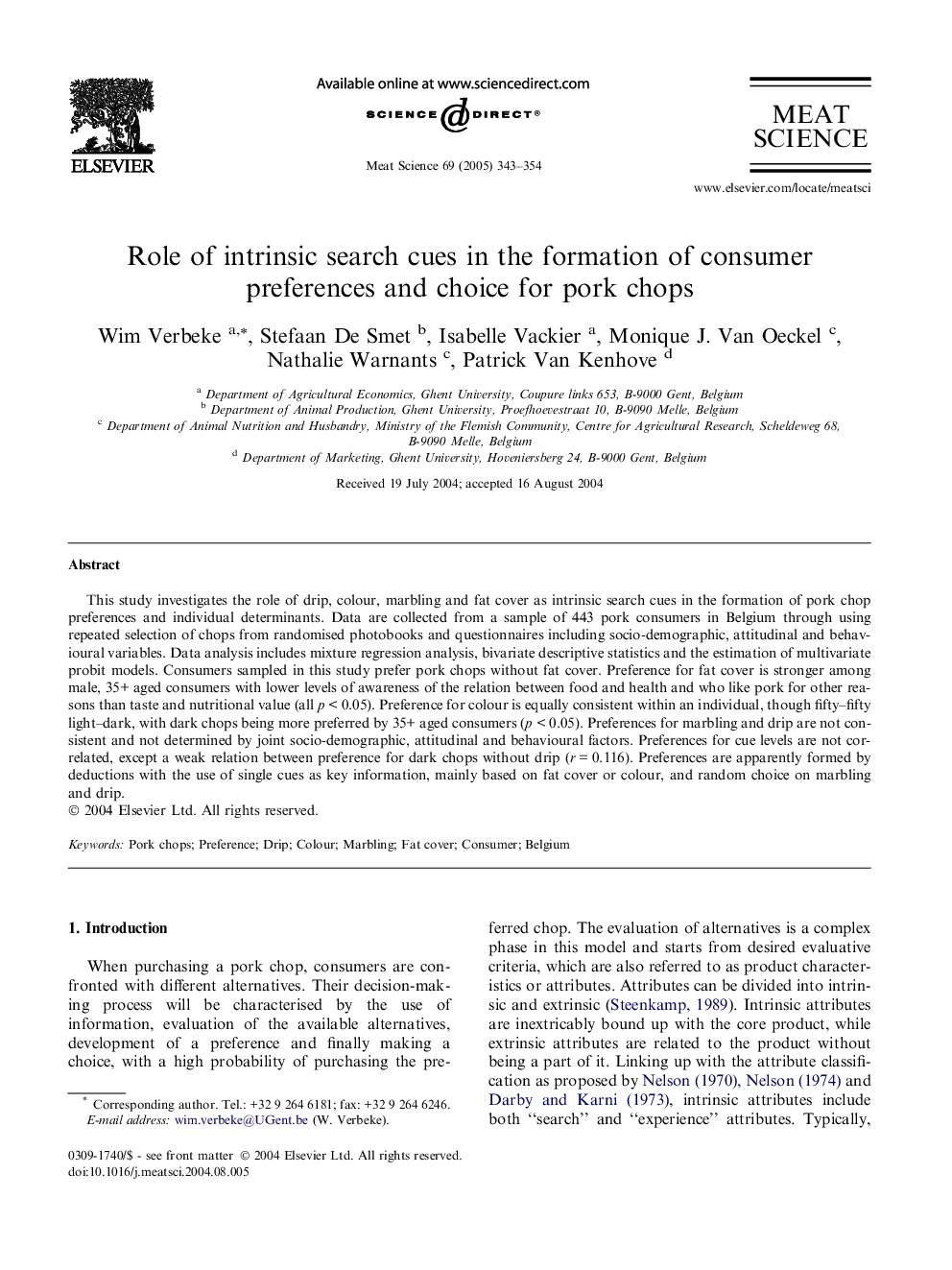| Article ID | Journal | Published Year | Pages | File Type |
|---|---|---|---|---|
| 8983765 | Meat Science | 2005 | 12 Pages |
Abstract
This study investigates the role of drip, colour, marbling and fat cover as intrinsic search cues in the formation of pork chop preferences and individual determinants. Data are collected from a sample of 443 pork consumers in Belgium through using repeated selection of chops from randomised photobooks and questionnaires including socio-demographic, attitudinal and behavioural variables. Data analysis includes mixture regression analysis, bivariate descriptive statistics and the estimation of multivariate probit models. Consumers sampled in this study prefer pork chops without fat cover. Preference for fat cover is stronger among male, 35+ aged consumers with lower levels of awareness of the relation between food and health and who like pork for other reasons than taste and nutritional value (all p < 0.05). Preference for colour is equally consistent within an individual, though fifty-fifty light-dark, with dark chops being more preferred by 35+ aged consumers (p < 0.05). Preferences for marbling and drip are not consistent and not determined by joint socio-demographic, attitudinal and behavioural factors. Preferences for cue levels are not correlated, except a weak relation between preference for dark chops without drip (r = 0.116). Preferences are apparently formed by deductions with the use of single cues as key information, mainly based on fat cover or colour, and random choice on marbling and drip.
Related Topics
Life Sciences
Agricultural and Biological Sciences
Food Science
Authors
Wim Verbeke, Stefaan De Smet, Isabelle Vackier, Monique J. Van Oeckel, Nathalie Warnants, Patrick Van Kenhove,
